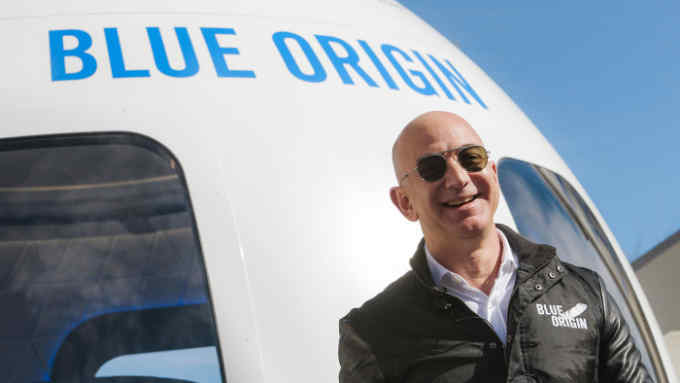‘Factories in space’ set the heart beating

Roula Khalaf, Editor of the FT, selects her favourite stories in this weekly newsletter.
Should humanity ever establish colonies in space, it will need the right equipment to survive away from Earth and its resources.
The possibility of manufacturing beyond our planet has intrigued science-fiction writers and engineers since the dawn of the space age but serious efforts to create “factories in space” have been limited.
This is beginning to change, as shown by a number of small-scale projects whose aims include building lunar bases and making artificial human organs.
“It’s definitely still early days,” says Andrew Rush, chief executive of Made in Space, a company founded in Silicon Valley in 2010. “The amount of activity in space manufacturing has grown significantly over the past five years and even over the past couple of years.”
One technology with great promise is additive manufacturing, or 3D printing. It involves building objects layer by layer out of materials such as polymer or metal. A demonstration 3D printer from Made in Space, under contract with Nasa, produced the first additively manufactured object in space after it was installed on the International Space Station in 2014.

It was followed by another system from the company, which has been in operation on the ISS since last year. This printer extrudes heated plastic and has produced parts, tools, devices and multi-part assemblies.
Low-gravity environments can present difficulties. “It’s still premature for the 3D printer,” says George Zhu, mechanical engineering professor at York University, Toronto. In space, when the printer deposits new layers on old layers, “there’s no gravity to help it bind properly”. Other 3D printing techniques that use metal powder and liquid resin are virtually impossible without gravity.
Even so, there could be technical and economic advantages from making complex products beyond Earth. “Currently if parts are broken or we need to resupply the spacecraft, then you have to make [the part] on Earth, put it on the rocket and choose the right time to launch,” says Prof Zhu. “With 3D printing you can get those on demand and save a lot of time.”
The ability to build structures on other planets would not only lay the foundations for settlements but could unlock the potential of extraterrestrial minerals and raw materials.
The European Space Agency has shown how this could be possible. It has 3D-printed a 1.5-tonne demonstration building block with artificial soil based on real lunar samples.
On the Moon, a lens could channel solar power to bake the dust, layer by layer. Phosphoric acid present on Mars could be used as a binder to perform the same function, says Tommaso Ghidini, ESA’s head of structures, mechanisms and materials.
“You have economic opportunities on [other] planets by using, extracting and mining [resources],” says Mr Ghidini. “There are commercial and economic opportunities you cannot grab unless you have manufacturing capabilities. You can transform those resources into something valuable.”

Freedom from the pull of gravity is exciting those at the forefront of medical science. US company Techshot is developing equipment for the ISS that uses “bio-ink” — stem cells and nutrients in a watery mix — to create human tissue through bioprinting. Its aim is to create a human heart, other organs and tissues.
On Earth, 3D bioprinting requires thick bio-inks containing chemicals and other materials to provide structural support, says Techshot. In space, however, tissues could be printed with finer print tips and lower viscosity bio-inks, containing only the biological materials needed to create a healthy organ. Mechanical and electrical stress would be applied in a culturing chamber to strengthen the tissue construct before return from orbit.
“On Earth, with just bio-ink it would turn into a puddle,” says Techshot’s Rich Boling. Studies show that low-gravity environments help specially programmed stem cells move towards becoming new heart muscle cells.
Techshot intends to launch its first bioprinter in late 2018 and produce a beating patch of cardiac cells, capable of being grafted on to a damaged heart, in 2019.
“We think that after about two months in space in our culture chamber, you’ll be able to have something that is transplantable,” says Mr Boling. A space-made heart patch could be ready for human trials by 2025.
Telecommunications is another area that could benefit from low gravity. Made in Space is putting the finishing touches to equipment that makes an “exotic” fibre-optic cable, which can transmit more data than traditional silica fibre.
Making it in space can eliminate tiny flaws that occur in a strong gravitational environment such as Earth, reducing signal loss. The company believes it can do this more efficiently and that the optical fibre could be the first product made at an industrial scale in space.
Made In Space plans to launch the fibre-production system on a rocket fired by SpaceX this year.

Comments